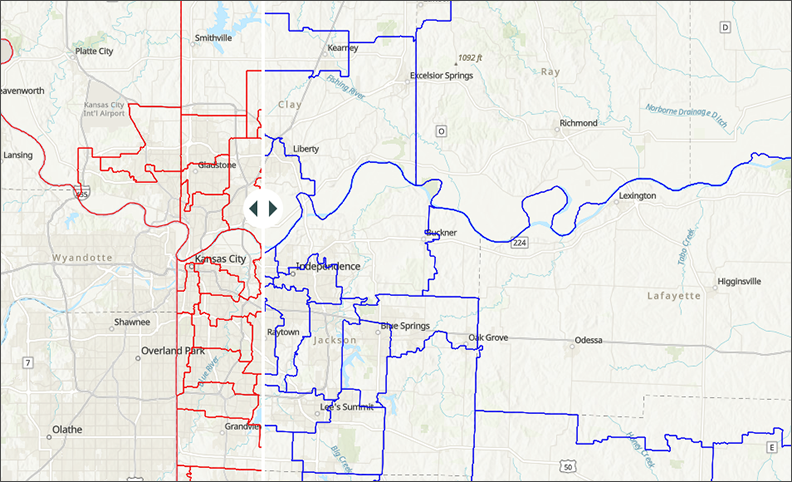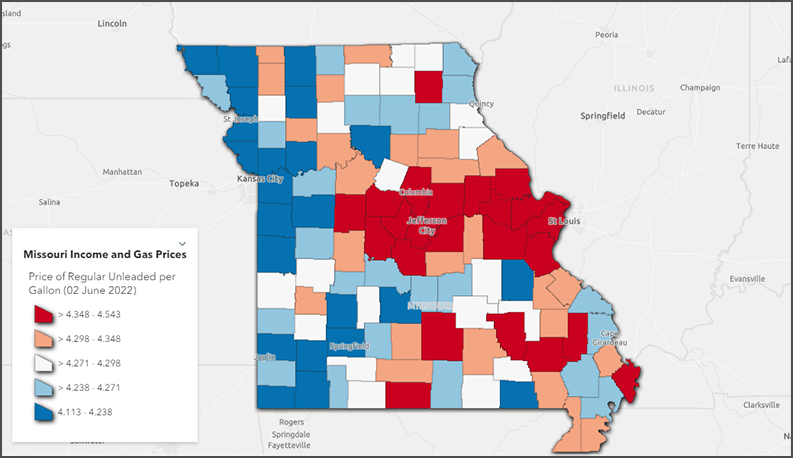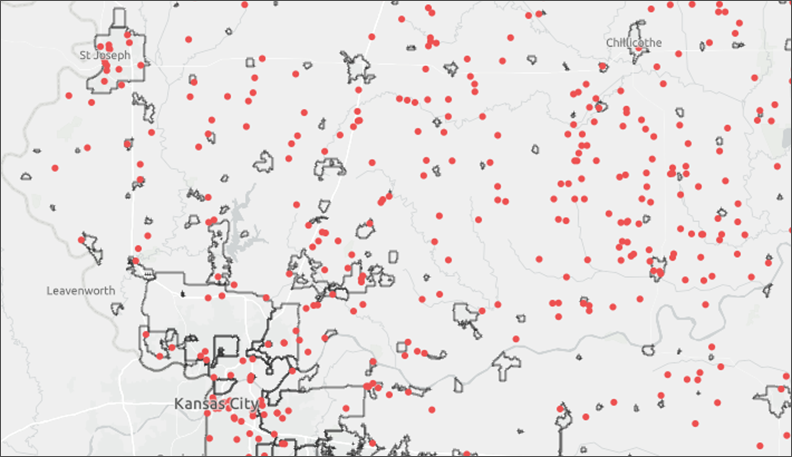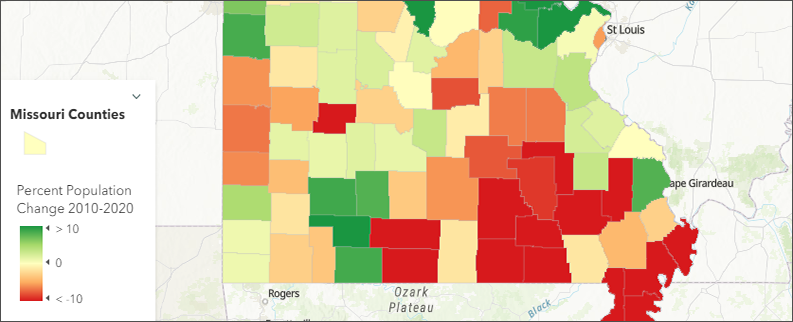This month, our partners at the Missouri Spatial Data Information Service (MSDIS) present a swipe map showing changing patterns of unemployment in Missouri across two decades.
The left side of the swipe map shows unemployment rates by Missouri county for 2000, and the right side shows the rates for 2020. Clicking on any county will show basic employment and workforce stats for the selected county and year.
Missouri Census Data Center frequently works with MSDIS on mapping and data projects. MSDIS is a spatial data retrieval and archival system offering many mapping resources, primarily focused on the state of Missouri.







